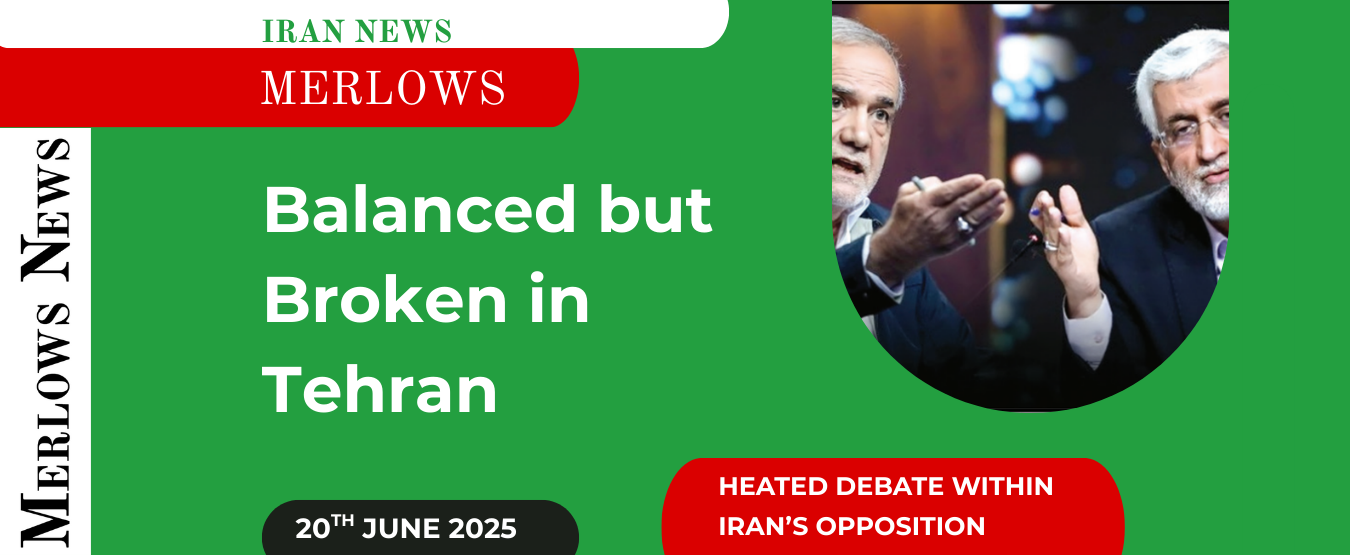Iran’s opposition abroad senses momentum, but at home silence reigns. Decades of betrayal have left a people torn between hope and fear.
In a Nutshell
On 19 June 2025, Reuters reported that exiled Iranian opposition groups were attempting to seize the moment. Fresh from June’s war, and with Tehran reeling from Israeli strikes, dissidents abroad called for Iranians to rise again. Yet within the country, hesitation was palpable. Protest movements had been crushed too many times. Hopes raised in 2009, 2019, and 2022 had each been buried in blood.
The opposition may sense its moment — but the Iranian people, scarred by betrayal and repression, remain cautious.
The Main Course
The split within Iran’s opposition is not merely tactical; it is existential. In Europe and the United States, exiles speak confidently of regime change. They issue statements, organise rallies, lobby parliaments. They see Israel’s strikes on Iranian military targets as vindication — proof the regime is vulnerable.
Inside Iran, the picture is different. Citizens live with the Revolutionary Guards on every street corner, the Basij militia in every neighbourhood, the ever-watchful eye of the state. They remember 2019, when fuel price protests brought millions into the streets — and thousands were killed or disappeared. They remember 2022, when the death of Mahsa Amini ignited fury, only to end with mass arrests and executions.
This is the fracture: an opposition confident abroad, a population weary at home. Each speaks the same language of freedom, but one whispers while the other shouts.
The Media Recommends
Reuters put it carefully: “Iran’s divided opposition senses its moment.”
Source: Reuters
The BBC, with familiar caution, framed the debate as “activists abroad encouraging protests despite domestic fear.”
And The Guardian, always eager to romanticise “dialogue,” described it as “healthy disagreement.” Healthy? Tell that to those who remember the mass graves of 1988, or the mothers still searching for the bodies of sons executed in Evin Prison.
The Merlow View
History offers clarity here. Dissident movements always fracture under pressure. Russian émigrés in Paris argued while Stalin tightened his grip. Cuban exiles plotted in Miami while Castro outlived them all. For Iran, the divide is even sharper: a gulf between those who can speak freely abroad and those who pay in blood at home.
The fantasy is that exiled leaders can simply summon a revolution by proclamation, that hashtags and speeches will ignite a people crushed by fear. The reality is that Iranians inside the country must live with the consequences, and their caution is rational. They have buried too many martyrs already.
But fracture does not mean failure. The mere existence of an opposition — divided, noisy, imperfect — is proof that the regime cannot erase dissent entirely. Every call from abroad, every whisper at home, is part of the same long erosion. And when regimes fall, it is rarely because unity arrived, but because cracks widened until the structure collapsed.
The invitation is not to dismiss the opposition, nor to idolise it. It is to see the fracture clearly. To understand that exile and endurance are two sides of the same coin, and that both matter. Iran’s opposition may be balanced but broken — yet even broken voices can wear down a tyrant’s walls.







Share this: